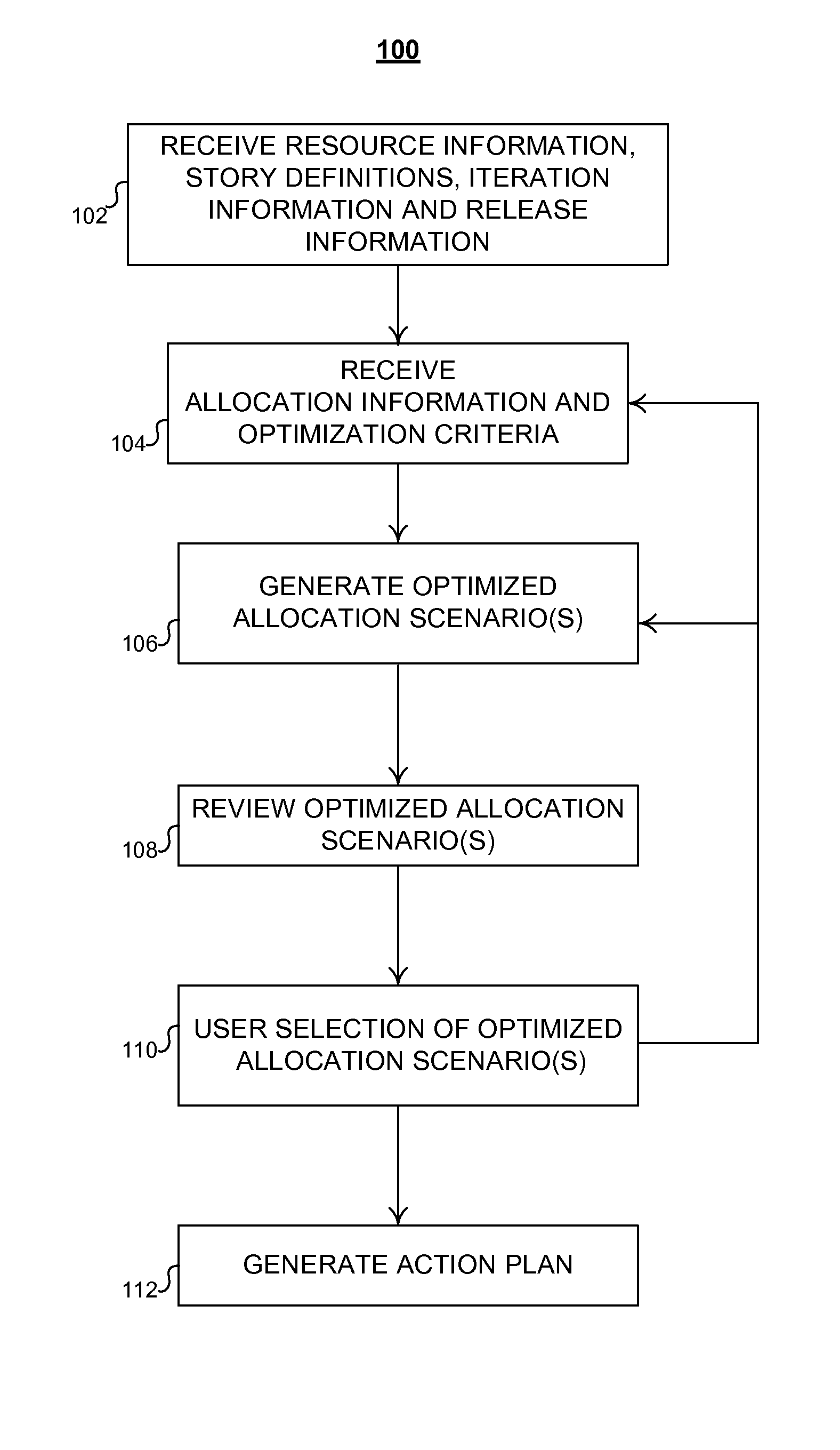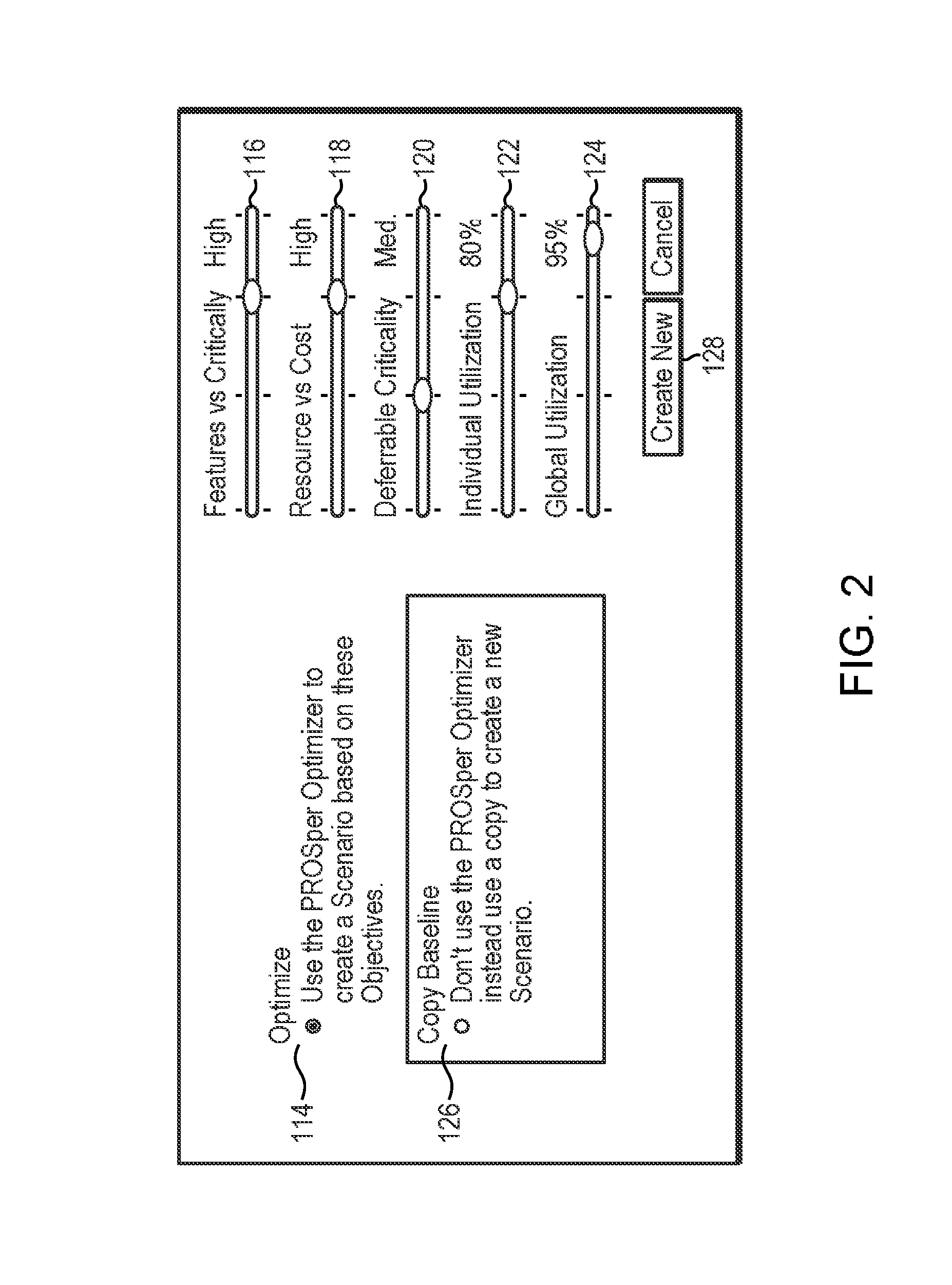Method and system for allocation of resources in an Agile environment
a technology of agile environment and resource allocation, applied in the field of computerimplemented methods and apparatuses, can solve the problems of team not being able to deliver all the stories in a single iteration, model still poses many challenges, and project planning is even more difficult, so as to reduce the time taken to plan atypical releases and reduce the time spent on planning. , the effect of reducing the time taken to plan
- Summary
- Abstract
- Description
- Claims
- Application Information
AI Technical Summary
Benefits of technology
Problems solved by technology
Method used
Image
Examples
use case examples
[0081]FIGS. 7a-d are graphical user interfaces depicting use case examples for utilizing a project management system to simulate story-level allocation scenarios. FIGS. 7a-d are not necessarily drawn to scale; emphasis is instead generally being placed upon illustrating the principles of the invention. The project management system illustrated by the graphical user interfaces of FIGS. 7a-d can be a part of the exemplary project management system 200 of FIG. 6a, which can, in turn, use the process flows illustrated in FIGS. 1 and 3-5.
[0082]FIG. 7a shows a graphical user interface 400a illustrating an exemplary story allocation scenario, which includes a backlog area 402, a display area 404, and a resource information area 406. The backlog area 402 provides a list of one or more stories yet to be scheduled as a part of a release. The project management system 200 is adapted to schedule as many stories in the backlog area 402 as possible subject to the constraints defined for the stori...
PUM
 Login to View More
Login to View More Abstract
Description
Claims
Application Information
 Login to View More
Login to View More - R&D
- Intellectual Property
- Life Sciences
- Materials
- Tech Scout
- Unparalleled Data Quality
- Higher Quality Content
- 60% Fewer Hallucinations
Browse by: Latest US Patents, China's latest patents, Technical Efficacy Thesaurus, Application Domain, Technology Topic, Popular Technical Reports.
© 2025 PatSnap. All rights reserved.Legal|Privacy policy|Modern Slavery Act Transparency Statement|Sitemap|About US| Contact US: help@patsnap.com



